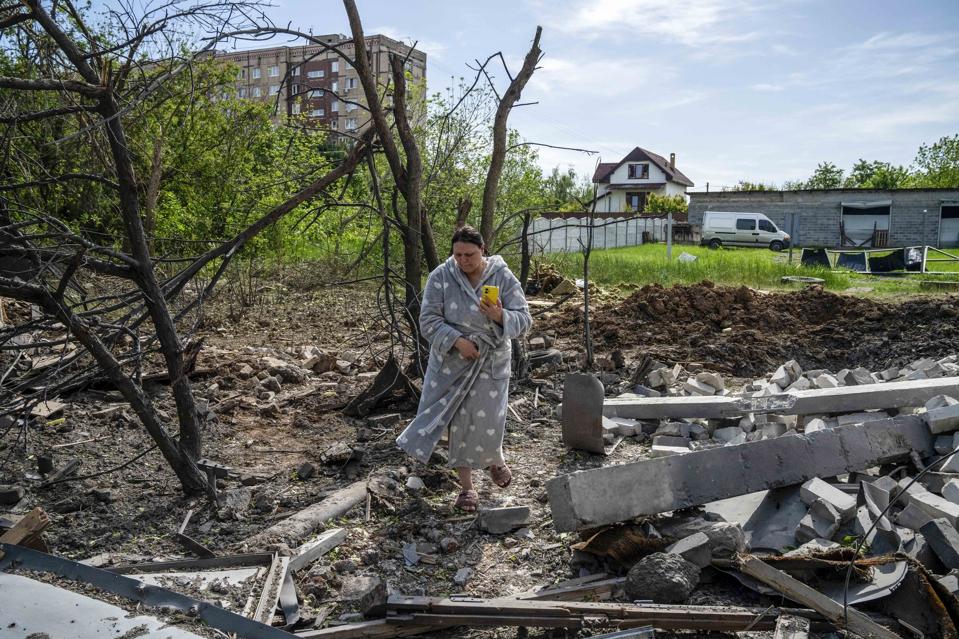Dispatches from Ukraine. Day 1,189.
Russia’s Attacks on Ukraine
Russia launched an unprecedented wave of aerial attacks on Ukraine between May 24 and 26, deploying 903 drones and 92 missiles over three consecutive nights, marking the most intense bombardment since the start of the war.
On May 26 alone, Ukraine’s Air Force intercepted nine cruise missiles and neutralized 288 of the 355 incoming drones, a record number deployed in single attack to date. Despite the staggering number of drones and missiles launched, Ukraine reported no civilian casualties in the assault; the previous day’s barrage, however, killed at least 13 civilians, including three children, and wounded more than 60 people across the country.
U.S. President Donald Trump expressed dismay with Russian President Vladimir Putin following Moscow’s massive attacks. Speaking to reporters in Morristown, New Jersey, on May 25 Trump said, “I don’t know what’s wrong with him. What the hell happened to him? Right? He’s killing a lot of people. I’m not happy about that.” The Trump administration has not yet announced new sanctions or measures to deter Russia’s escalating aggression.
Russia followed up its massive overnight bombardments on May 25 and 26 with sporadic daytime assaults. Cluster munitions designed to maximize casualties hit a house in northern Sumy oblast, or region, killing one woman and injuring another, on May 26. The previous day, Russian artillery shelling killed a man in a nearby village. Also on May 25, a coordinated glide bomb and drone attack on six settlements in Ukraine’s eastern region of Kharkiv killed two women in the city of Kupyansk.
Odesa region. Russia struck the Black Sea port city of Odesa with two ballistic missiles on May 23, killing three men and injuring five other people.
Kherson region. Russian drone attacks in southern Ukraine killed one resident and injured four others on May 25 while causing widespread damage to civilian infrastructure.
Donetsk region. On May 23, a Russian glide bomb struck a residential area in the eastern city of Kostyantynivka, killing one woman and injuring three other people.
Germany has joined its major NATO allies in lifting range restrictions on weapons supplied to Ukraine, allowing Kyiv to strike targets inside Russia without limits, Chancellor Friedrich Merz announced on May 26. This policy shift paves the way for Berlin to deliver its Taurus cruise missiles, capable of hitting targets more than 300 miles away, which Ukraine has long requested.
Previously, the German government hesitated to send long-range missiles for fears of escalating tensions with Russia, a nuclear power. The recent move aligns Germany with France, the United Kingdom, and the United States, who have already eased similar restrictions on long-range weapons sent to Ukraine.
Ukrainian President Volodymyr Zelenskyy will reportedly visit Berlin on Wednesday, May 28, for a meeting with German Chancellor Friedrich Merz. According to German officials, Merz will brief Zelenskyy on a forthcoming European Union sanctions package against Moscow and discuss potential German support for scaling Ukraine’s defense production. It is not yet clear whether Zelenskyy’s visit is connected to Germany’s recent decision to allow the use of its weapons against military targets on Russian territory.
The Netherlands has dispatched the last of the 24 American-made F-16 fighter jets promised to Ukraine on May 26, according to Dutch Defense Minister Ruben Brekelmans. Alongside the jets, the Netherlands is also training Ukrainian pilots and sharing military expertise to help modernize Ukraine’s armed forces to NATO standards. The first F-16s from the Netherlands arrived in Ukraine in October 2024, with additional deliveries continuing through early 2025. Ukraine has lost three F-16s so far in the conflict.
Ukraine’s dollar bonds, once a top emerging-market play on Donald Trump’s promised peace deal, have tumbled more than 10% in 2025, making them the worst performers globally, as hopes fade for a swift resolution to the war. The optimism that nearly doubled bond prices after Ukraine’s 2023 restructuring has evaporated with Trump’s stalled diplomatic overtures, including Putin’s snub of proposed Istanbul talks. Meanwhile, East European markets like Warsaw and Budapest are soaring on the back of massive defense spending pledges.
By Danylo Nosov, Karina L. Tahiliani

